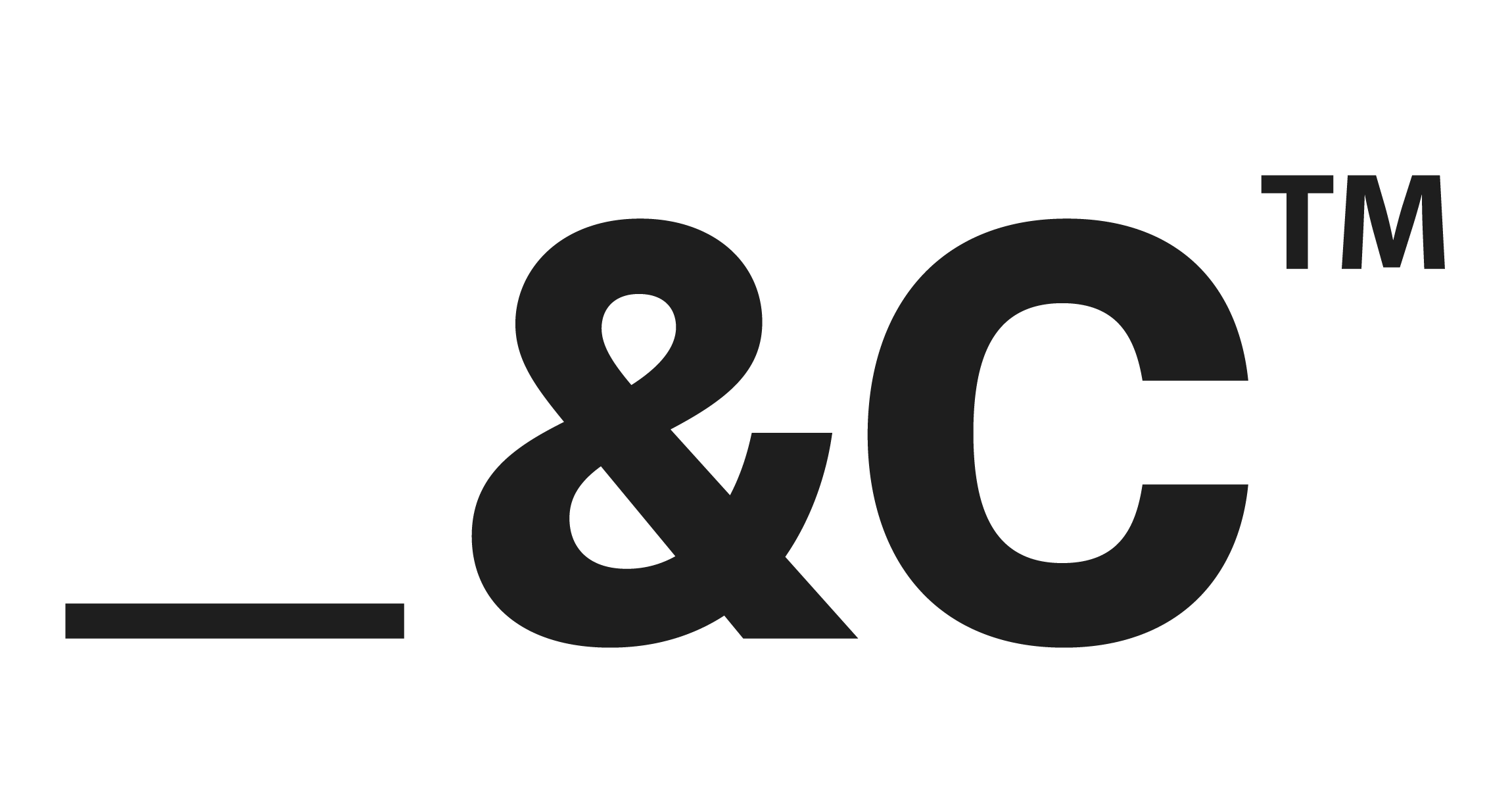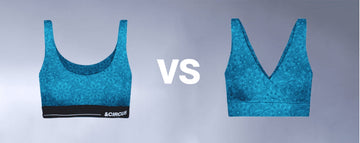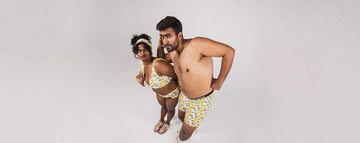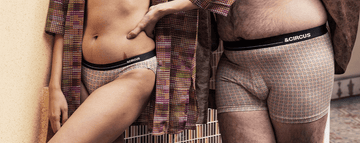Quick Listen:
The satin sheen of a corset, the whisper of lace, the soft hug of micromodal lingerie has always been more than just undergarments. It's a mirror to culture, a canvas for self-expression, and, increasingly, a battleground for comfort and sustainability. From the rigid stays of ancient Crete to the wire-free bras of 2025, women's lingerie tells a story of shifting priorities, where fashion, function, and ethics collide. What does it mean when a bra goes from hidden support to a bold statement piece? The answer lies in a revolution that's reshaping not just wardrobes but the very way we think about intimacy and identity.
Uncomfortable underwear shouldn't steal your confidence. At Andcircus, we craft ultra-soft, sustainable Lenzing Modal Micro® innerwear for every body, XS to 5XL. From briefs to bras, our custom packs fit you perfectly. Shop risk-free with our 100% satisfaction guarantee and embrace comfort that includes everyone. #LoveEveryBody. Shop Now!
How Women's Lingerie Evolves with Fashion Trends
Women's lingerie has never been static. In ancient times, as noted in historical records, the Snake Goddess of Crete wore a fitted corset-like garment around 1600 BCE, designed to lift and shape the bust. By the mid-4th century BCE, bronze statues of Artemis depicted Y-shaped breast bands, while Roman art from Pompeii (62–79 CE) showcased the mamillare, a precursor to the modern bra. Even Homer's *Iliad* references Aphrodite's “embroidered girdle,” a decorated breast-band that hinted at both utility and allure. These early garments weren't just about support they signaled status, beauty, and societal roles.
Fast-forward to the 21st century, and lingerie is less about conforming to ideals and more about breaking them. The rise of athleisure, as outlined in fashion histories, has blurred the lines between workout gear and everyday wear. Yoga pants, leggings, and sports jackets once confined to gyms now dominate casual wardrobes, with women embracing “fashionable, dressed-up sweats” that prioritize ease without sacrificing style. This shift has spilled into lingerie, where comfort is king, and the once-ubiquitous underwire bra is losing ground to softer, more flexible alternatives.
A New Era of Comfort and Inclusion
The lingerie market of 2025 is a far cry from the glossy, airbrushed world of Victoria's Secret in its 2000s heyday. That era, defined by push-up bras and angel wings, feels almost nostalgic now. As Vogue Business reports, post-pandemic consumers are prioritizing comfort and fit over exaggerated silhouettes. “Proper bras aren't what consumers are looking for not exclusively,” the outlet notes, highlighting a growing demand for wire-free designs and second-skin fabrics. Some are ditching bras altogether, opting for bralettes or nothing at all, a rebellion against decades of structured confinement.
Inclusion is another driving force. Brands are expanding size ranges to embrace petite, plus-size, and adaptive fits, ensuring that lingerie isn't a one-size-fits-most proposition. This mirrors broader fashion trends, where diversity in body types and gender identities is reshaping design. Sustainable fabrics like micromodal, bamboo, and organic cotton are gaining traction, offering a buttery-soft feel that's kind to both skin and planet. These materials, often marketed as “eco-friendly micromodal innerwear,” cater to consumers who want functionality without environmental guilt.
Brands Setting the Pace
Some brands are riding this wave with remarkable finesse. Savage X Fenty, for instance, has become a cultural juggernaut by celebrating diversity across body types, skin tones, and gender expressions. Its campaigns feature real bodies curvy, trans, disabled paired with vibrant, comfortable designs that feel like a party rather than a performance. Similarly, emerging players like CUUP and Parade are leaning into minimalist aesthetics, using breathable, eco-conscious materials that marry form and function.
Then there's AndCircus, a brand carving out a niche with sustainable micromodal innerwear for women, men, and maternity. Its focus on skin sensitivity and seamless construction taps into the “softwear revolution,” where lingerie feels like a second skin rather than a constraint. These brands aren't just selling products they're building emotional connections through influencer partnerships and retail strategies that prioritize authenticity. As Glamour notes, the days of lingerie designed solely for the male gaze are waning. Victoria's Secret, once the titan of the industry with a 32% market share in 2015, saw that figure slide to 19% by 2020, according to NPD Group data, as consumers turned to brands that reflect their values.
Navigating Challenges in a Shifting Market
But the path to reinvention isn't smooth. Brands face a tightrope walk between style, sustainability, and scalability. Producing eco-friendly lingerie often means higher costs and thinner margins, especially when transitioning from synthetic to natural fabrics. Consumers, wary of greenwashing, demand transparency certified materials and ethical production are non-negotiable for many. Technical challenges persist, too: achieving a perfect fit across diverse body types is no small feat, requiring investment in design innovation and testing.
Then there's the cultural tension. As The Guardian reports, bras are moving from “invisible to visible,” with lace, sheer, and mesh designs replacing seamless T-shirt bras. Retailers like M&S are championing a “sexier aesthetic” for spring , suggesting that allure is making a comeback but on women's terms. Balancing this bold, visible trend with the demand for comfort and practicality is a puzzle brands must solve.
Seizing Opportunities in a Growing Market
Despite these hurdles, the opportunities are vast. The sustainable intimate apparel market is projected to hit by 2030, fueled by demand for eco-conscious and inclusive designs. Brands that embrace circular fashion models think recyclable fabrics and take-back programs gain a competitive edge. Gender-inclusive and maternity-friendly lingerie segments are also expanding, reflecting a broader cultural shift toward fluidity and accessibility.
Direct-to-consumer (D2C) channels are proving to be a game-changer, allowing brands to leverage data for personalized sizing and design. Imagine AI-aided tools that scan your body for a custom fit or suggest styles based on your lifestyle. These innovations aren't just futuristic they're already shaping the industry, giving early adopters a head start in a crowded market.
A Memorable The Future Is Soft and Bold
Lingerie, once a symbol of constraint, is now a canvas for liberation. It's in the lace bra peeking out from a blazer, the micromodal bralette that feels like a whisper against the skin, the gender-neutral designs that defy old norms. Industry experts predict a future where comfort tech, AI-driven sizing, and ethical production aren't just trends but standards. Brands like AndCircus, with their focus on sustainable micromodal, are setting the pace, proving that lingerie can be both indulgent and responsible.
The story of lingerie is one of transformation not just in fabric or fit but in what it represents. It's about choice: to be comfortable, to be seen, to be sustainable, to be yourself. In a world that's always asking women to be more, lingerie is finally letting them be exactly who they are.
Frequently Asked Questions
How has women's lingerie evolved from corsets to modern comfort wear?
Women's lingerie has transformed dramatically from the rigid corset-like garments of ancient Crete (1600 BCE) to today's comfort-focused designs. Modern lingerie prioritizes wire-free bras, breathable fabrics like micromodal, and flexible alternatives that feel like a second skin. This shift reflects broader fashion trends toward athleisure and the post-pandemic emphasis on comfort over structured, restrictive undergarments.
What sustainable materials are being used in eco-friendly lingerie today?
Sustainable lingerie brands are increasingly using eco-conscious materials like micromodal, bamboo, and organic cotton that offer a buttery-soft feel while being environmentally responsible. These natural fabrics provide breathability and skin sensitivity benefits compared to synthetic alternatives. Brands like AndCircus focus specifically on sustainable micromodal innerwear, catering to consumers who want functionality without environmental guilt.
Why are wire-free bras becoming more popular than traditional underwire bras?
Wire-free bras are gaining popularity because post-pandemic consumers prioritize comfort and fit over exaggerated silhouettes. The "softwear revolution" emphasizes lingerie that feels like a second skin rather than a constraint, with many women ditching structured bras for bralettes or going braless altogether. This trend reflects a cultural shift away from lingerie designed for the male gaze toward designs that prioritize women's personal comfort and choice.
Disclaimer: The above helpful resources content contains personal opinions and experiences. The information provided is for general knowledge and does not constitute professional advice.
You may also be interested in: How Body-Positive Innerwear Campaigns Resonate With Gen Z
Uncomfortable underwear shouldn't steal your confidence. At Andcircus, we craft ultra-soft, sustainable Lenzing Micro Modal innerwear for every body, XS to 5XL. From briefs to bras, our custom packs fit you perfectly. Shop risk-free with our 100% satisfaction guarantee and embrace comfort that includes everyone. #LoveEveryBody. Shop Now!






































